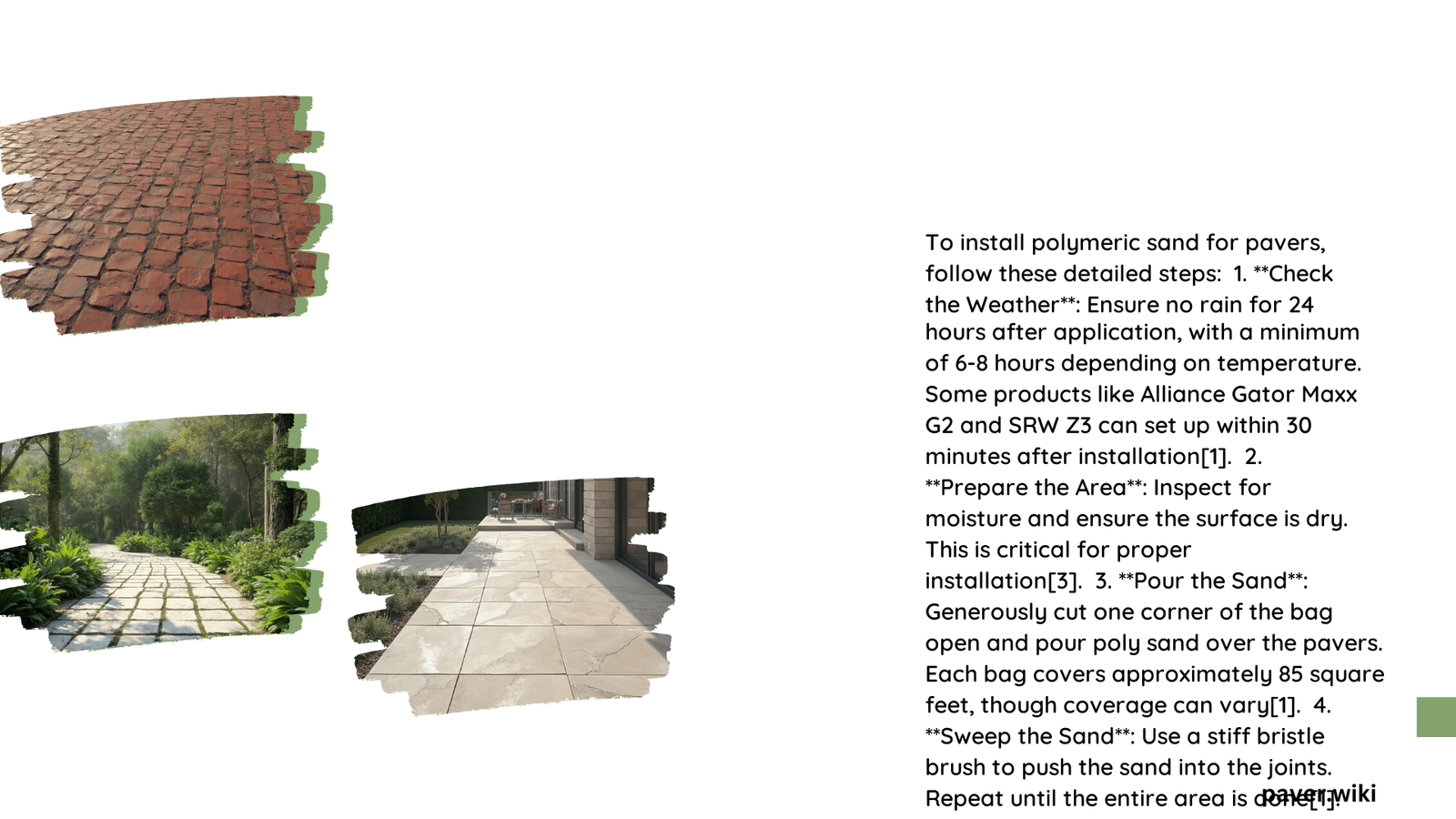Polymeric sand is a crucial component in paver installation, providing stability and preventing weed growth between pavers. This guide offers detailed instructions for applying polymeric sand, covering preparation, application techniques, curing time, and common mistakes to avoid. By following these steps, you can ensure a professional and long-lasting paver installation that enhances the beauty and functionality of your outdoor space.
What is Polymeric Sand and Why is it Important for Paver Installation?
Polymeric sand is a specially formulated mixture of fine sand and polymer additives that hardens when exposed to water. It’s essential for paver installation because it:
- Locks pavers in place, preventing shifting and settling
- Inhibits weed growth and insect infestation between pavers
- Resists erosion from rain, wind, and freeze-thaw cycles
- Enhances the overall appearance of the paved area
What Are the Key Steps in Preparing for Polymeric Sand Application?

Before applying polymeric sand, proper preparation is crucial:
- Ensure the paver surface and joints are completely dry
- Check weather forecasts for no rain within 24 hours of installation
- Clean the paver surface thoroughly, removing any debris or existing joint material
- Repair any damaged or uneven pavers
- Gather necessary tools: broom, plate compactor, leaf blower, and water hose
How to Properly Spread and Compact Polymeric Sand?
Follow these steps for effective spreading and compaction:
- Spread sand evenly across the surface using a tough-bristle broom
- Fill joints completely, sweeping in parallel and perpendicular directions
- Use a plate compactor with at least 5,000 pounds of force
- Compact from the center outwards to avoid air pockets
- Repeat sweeping and compacting until joints are fully saturated
What is the Correct Method for Activating Polymeric Sand?
Proper activation is crucial for the sand to set correctly:
- Remove excess sand from the surface using a broom and leaf blower
- Ensure sand is 1/8 inch below the paver top or chamfer bottom
- Use a hose with a shower nozzle setting
- Start from the bottom of slopes, working in 200 sq. ft. sections
- Saturate joints without allowing water accumulation on the surface
How Long Does Polymeric Sand Take to Cure?
Curing time varies based on environmental factors:
- Initial set: 24 hours with no rain
- Full cure: Up to 30 days
- Minimum temperature: 32°F (0°C)
- Humidity impact: Higher humidity may extend curing time
What Are Common Installation Mistakes and How to Avoid Them?
| Mistake | Impact | Prevention |
|---|---|---|
| Insufficient Compaction | Air pockets, loose pavers | Use proper compaction equipment and technique |
| Excess Surface Sand | Hazing or staining | Remove all excess sand before activation |
| Inadequate Joint Saturation | Gaps, instability, weed growth | Ensure complete joint filling and proper water activation |
| Ignoring Weather Conditions | Weak bond, improper setting | Check weather forecast, avoid wet conditions |
How to Calculate the Amount of Polymeric Sand Needed?
To determine the quantity of polymeric sand required:
- Measure the total square footage of the paved area
- Check the manufacturer’s coverage rate (typically 20-50 sq. ft. per bag)
- Divide total area by coverage rate to get the number of bags needed
- Add 10% extra for waste and uneven joints
Example calculation:
– Area: 100 sq. ft.
– Coverage rate: 25 sq. ft. per bag
– Bags needed: 100 ÷ 25 = 4 bags
– With 10% extra: 4 + 0.4 = 4.4 bags (round up to 5)
What Are the Best Practices for Maintaining Polymeric Sand Joints?
To ensure longevity of your polymeric sand installation:
- Allow full curing before heavy use (30 days recommended)
- Avoid power washing or aggressive cleaning methods
- Reapply sand as needed, typically every 2-3 years
- Address any settling or shifting of pavers promptly
- Keep the paved area clean and free of debris
By following these polymeric sand for pavers installation instructions, you can achieve a professional-looking and durable paved surface that will enhance your outdoor space for years to come.
